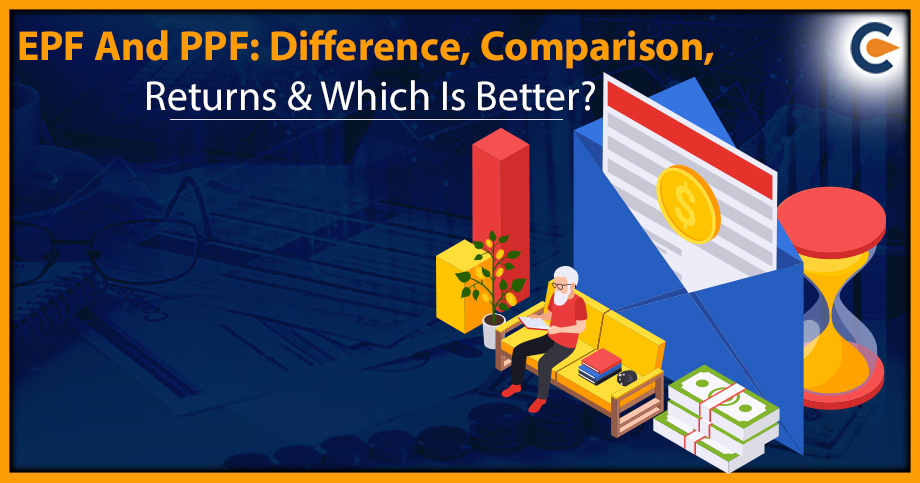Employee Provident Fund (EPF) and Public Provident Fund (PPF) are two of the most popular savings schemes in India. Both of these schemes have been designed to help people save money for their future. They are widely popular due to their tax-saving benefits, long-term investment options, and guaranteed returns. However, there are many differences between EPF and PPF, and it can be confusing to determine which one is better. In this blog, we will discuss the key differences, comparisons, returns, and which one is better between EPF and PPF.
What is Employee Provident Fund (EPF)?
The Employee Provident Fund (EPF) is a retirement savings scheme that is mandatory for all employees in India who are earning more than Rs 15,000 per month. Under this scheme, both the employee and the employer make equal contributions towards the fund every month. The contribution is 12% of the employee’s basic salary, out of which 8.33% is invested in the EPF account, and the remaining 3.67% goes towards the Employee’s Pension Scheme (EPS). The EPF is managed by the Employees’ Provident Fund Organization (EPFO) and the funds are invested in government bonds and other approved securities.
What is Public Provident Fund (PPF)?
The Public Provident Fund (PPF) is a government-backed savings scheme that is open to all citizens of India, including salaried individuals, self-employed individuals, and housewives. It is a long-term investment option that offers tax benefits and guaranteed returns. Under this scheme, individuals can make a minimum contribution of Rs 500 and a maximum of Rs 1.5 lakh per financial year. The funds are invested in government securities and the returns are tax-free. The tenure of a PPF account is 15 years, and it can be extended in blocks of 5 years.
Comparison between EPF and PPF
The following is a comparison between EPF and PPF:
- Eligibility: EPF is mandatory for salaried employees, while PPF is open to all citizens of India.
- Contribution: The contribution towards EPF is made by both the employee and the employer, while the contribution towards PPF is made solely by the individual.
- Tax Benefits: Both EPF and PPF offer tax benefits, but the tax exemptions on PPF contributions are higher compared to EPF contributions. Under Section 80C of the Income Tax Act, contributions to EPF are eligible for tax exemptions up to a maximum of Rs 1.5 lakh per financial year. On the other hand, contributions to PPF are eligible for tax exemptions under Section 80C, and the interest earned on the PPF balance is exempt from tax under Section 10(11).
- Investment Options: EPF funds are invested in government bonds and other approved securities, while PPF funds are invested solely in government securities. EPF offers a lower degree of risk as the funds are invested in government bonds, but the returns are also lower compared to other investment options. PPF, on the other hand, offers a higher degree of safety as the funds are invested in government securities, but the returns are also lower compared to other investment options.
- Returns: The returns on EPF are fixed at 8.5% per annum, while the returns on PPF vary based on the performance of the government securities in which the funds are invested. However, the returns on PPF are usually in the range of 7% to 8% per annum.
- Tenure: The tenure of EPF is till the employee retires, while the tenure of PPF is 15 years, which can be extended in blocks of 5 years. EPF provides a long-term savings option for employees, while PPF provides a medium-term savings option for individuals.
- Withdrawal: The withdrawal from EPF is allowed only after the employee retires or resigns, while the withdrawal from PPF is allowed after the completion of 15 years or on the death of the account holder. EPF provides a comprehensive retirement solution, while PPF provides a savings option for medium-term financial goals.
Which Is Better: EPF or PPF?
The choice between EPF and PPF depends on the individual’s financial goals, tax liabilities, and risk tolerance.
For salaried employees, EPF is a mandatory savings option and it provides a comprehensive retirement solution. The contribution towards EPF is made by both the employee and the employer, which makes it a convenient option for employees to save for their future.
For individuals who are looking for a medium-term savings option with tax benefits, PPF is a good option. PPF offers tax exemptions on contributions and tax-free returns, which makes it a tax-efficient savings option. Additionally, PPF provides a higher degree of safety as the funds are invested in government securities.
Conclusion
In conclusion, EPF and PPF[1] are two of the most popular long-term and medium-term savings options in India. EPF is a mandatory savings option for salaried employees and provides a comprehensive retirement solution, while PPF is a good option for individuals looking for a tax-efficient medium-term savings option.
EPF offers a lower degree of risk as the funds are invested in government bonds, but the returns are also lower compared to other investment options. PPF, on the other hand, offers a higher degree of safety as the funds are invested in government securities, but the returns are also lower compared to other investment options.
Both EPF and PPF offer tax benefits, but the tax exemptions on PPF contributions are higher compared to EPF contributions. The choice between EPF and PPF depends on the individual’s financial goals, tax liabilities, and risk tolerance.
It is important to remember that both EPF and PPF should be considered as long-term savings options and should not be considered as a source of quick funds. Individuals should consult with a financial advisor before making a decision on which savings option to choose.
In conclusion, both EPF and PPF are good savings options with their own set of benefits and drawbacks. Individuals should consider their financial goals, tax liabilities, and risk tolerance before making a decision on which savings option to choose.
Read Our Article: What Is The Difference Between ESI And EPF Registration?











